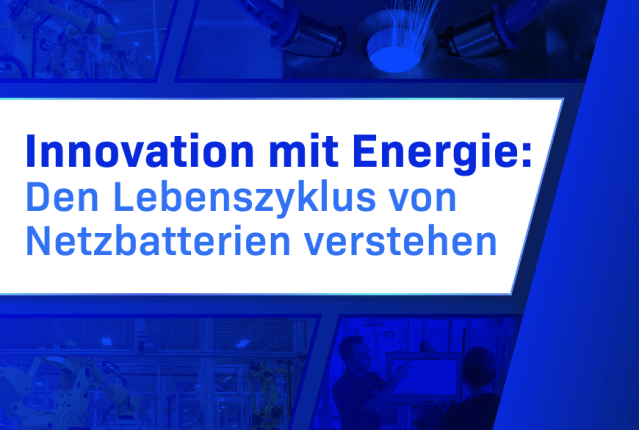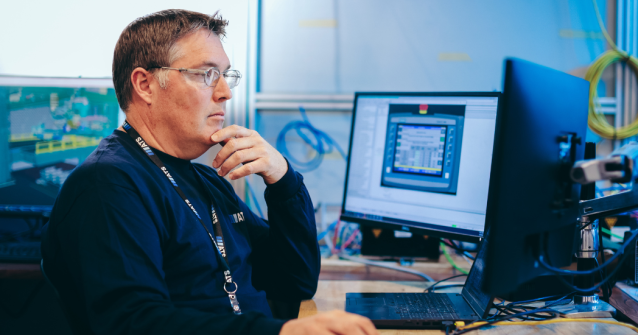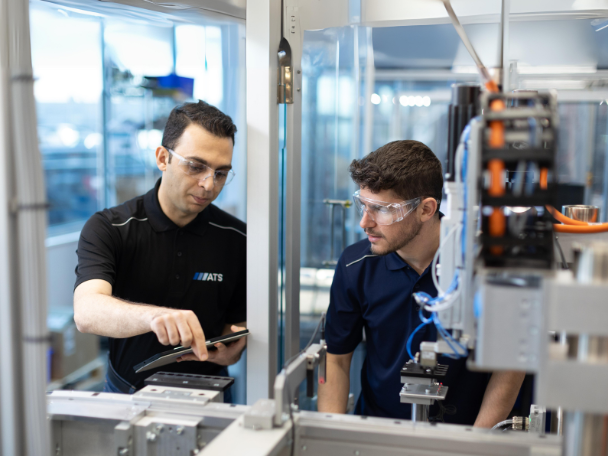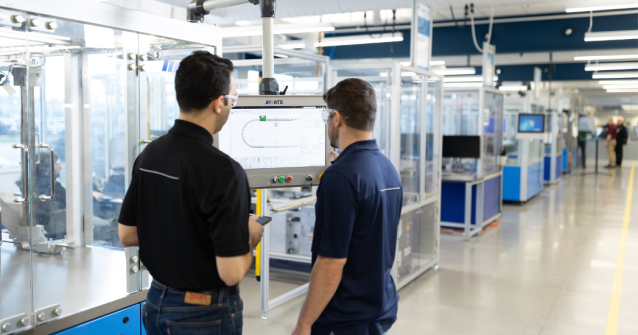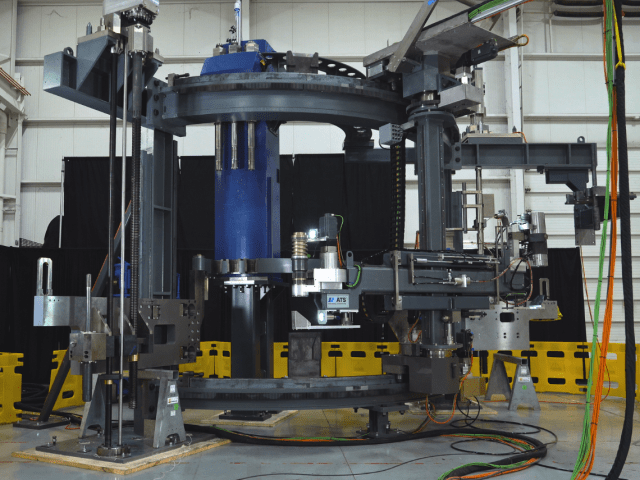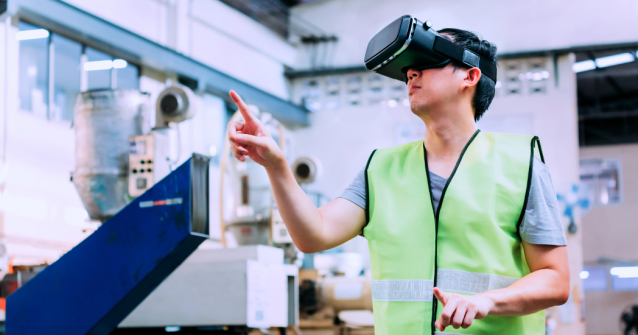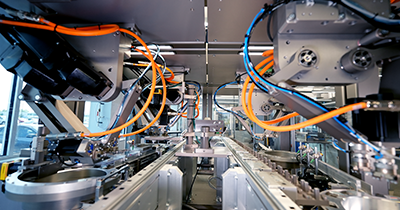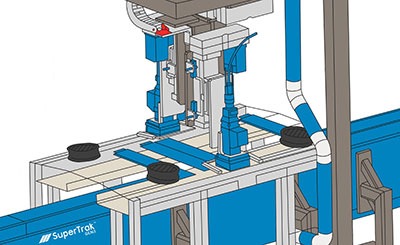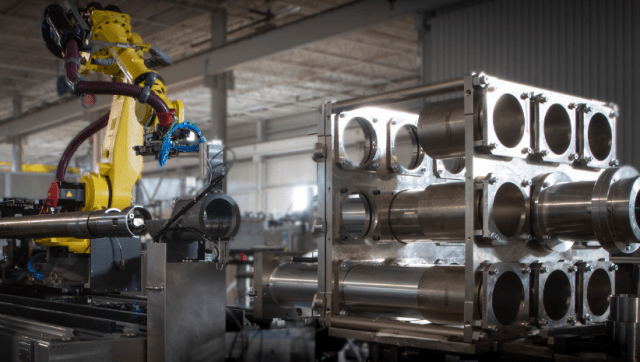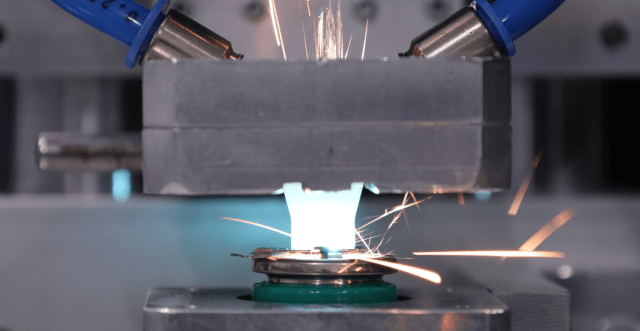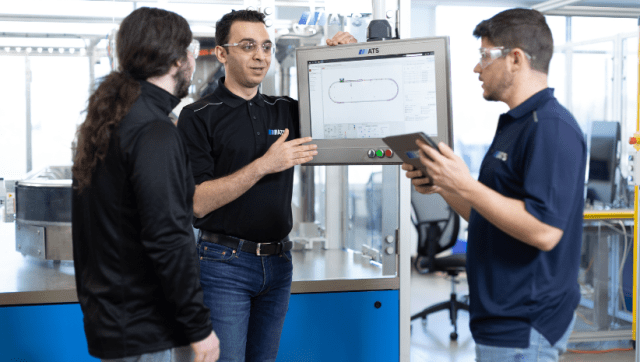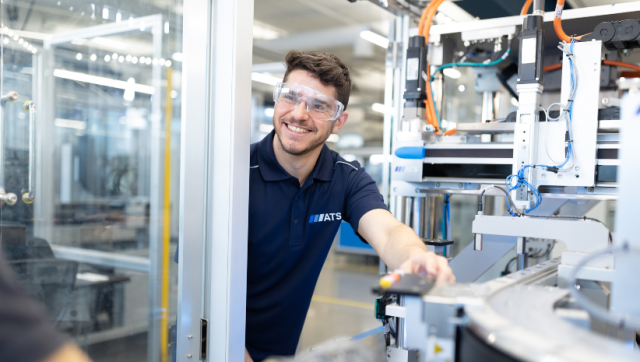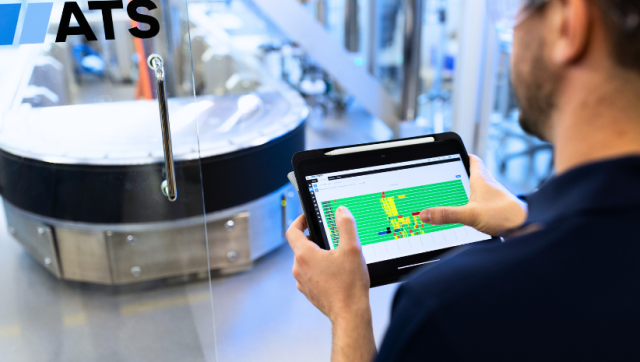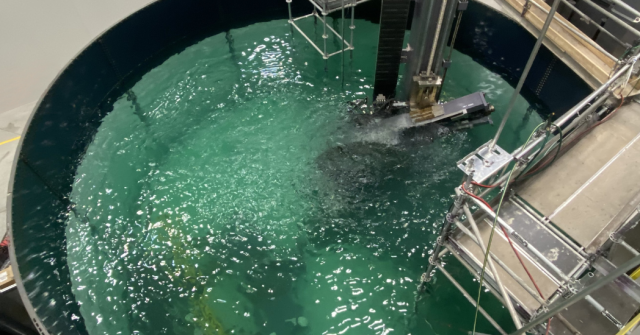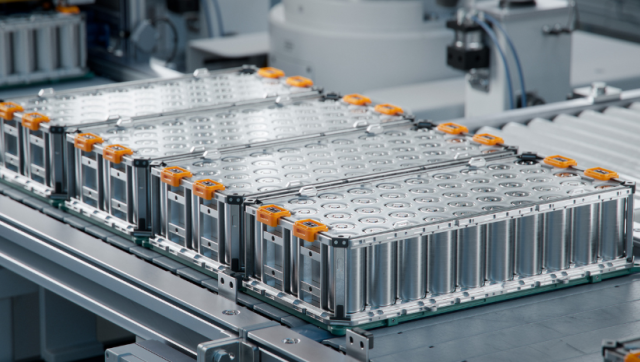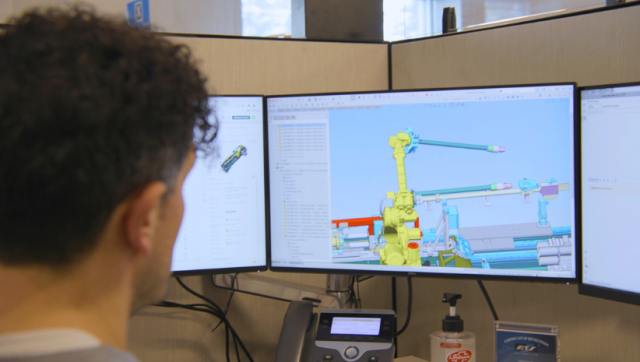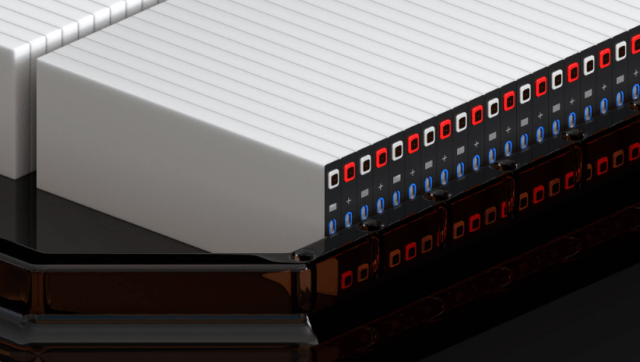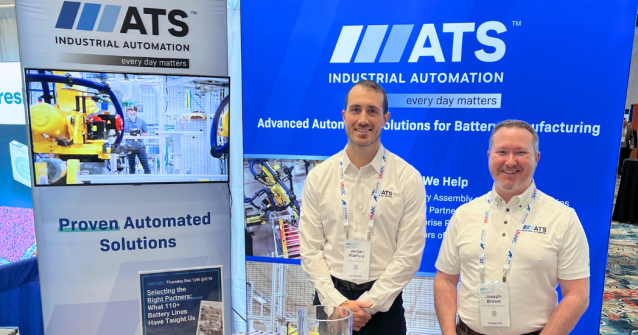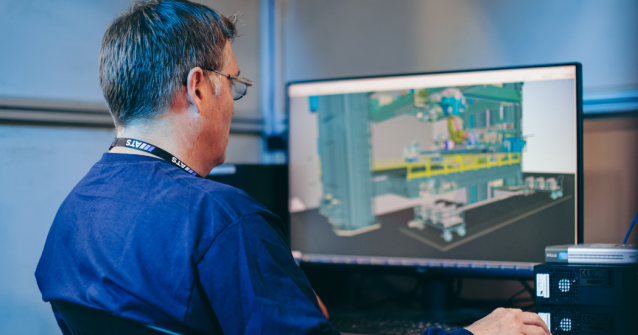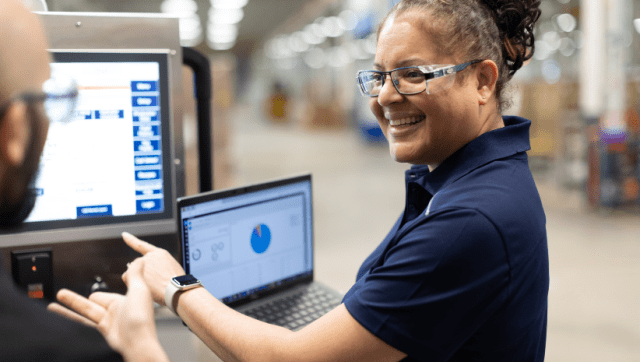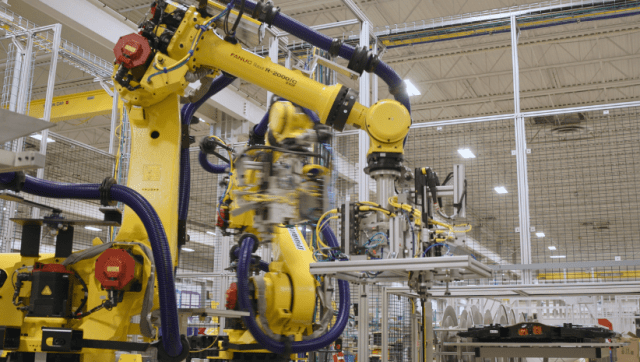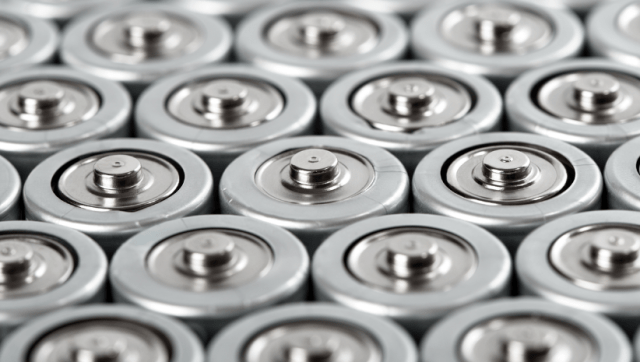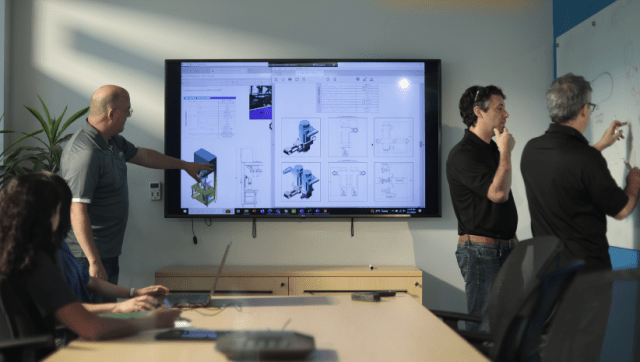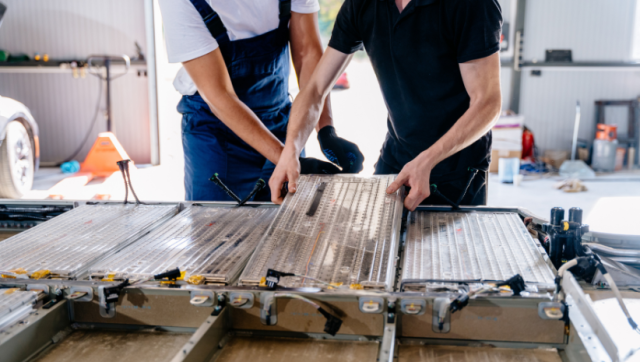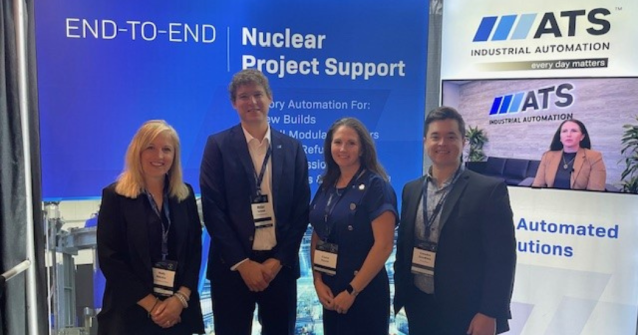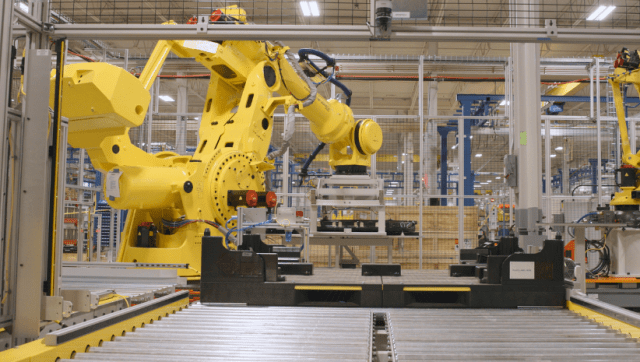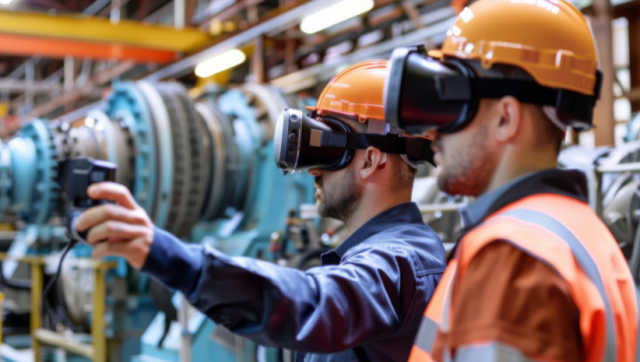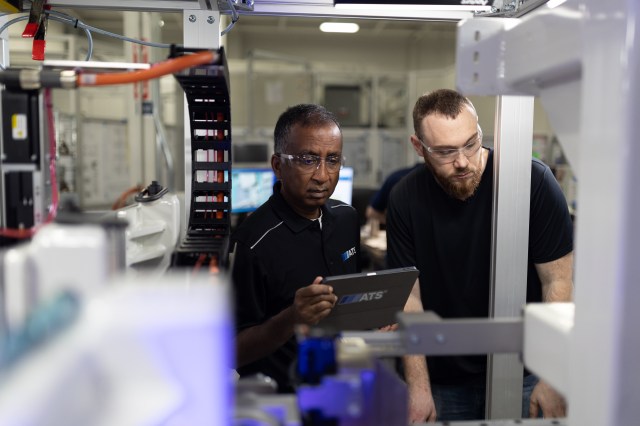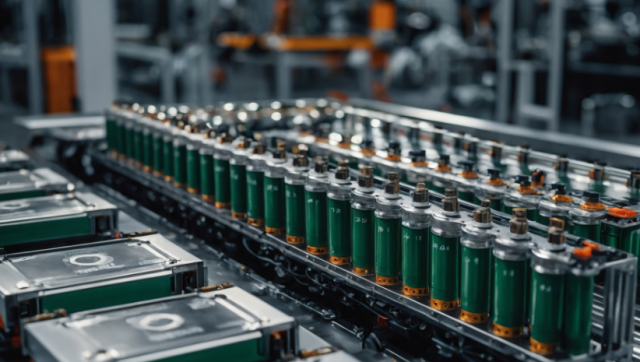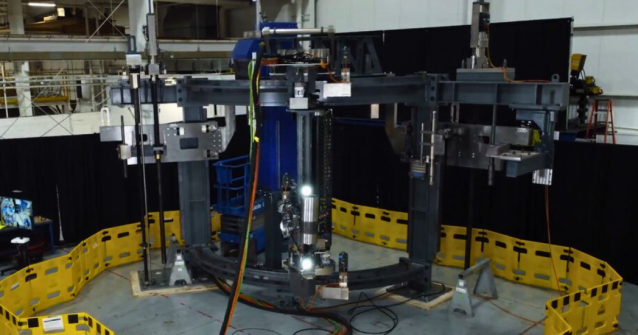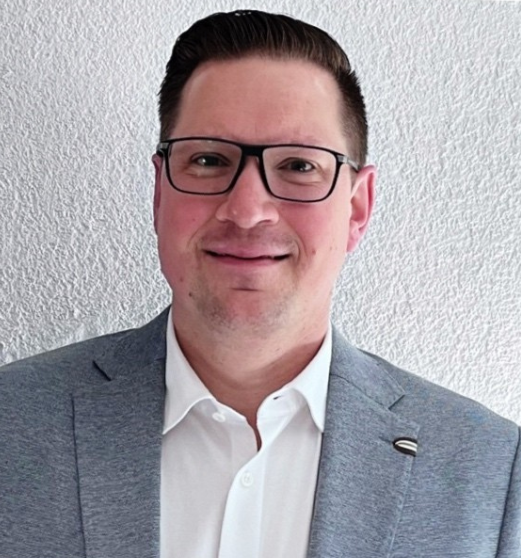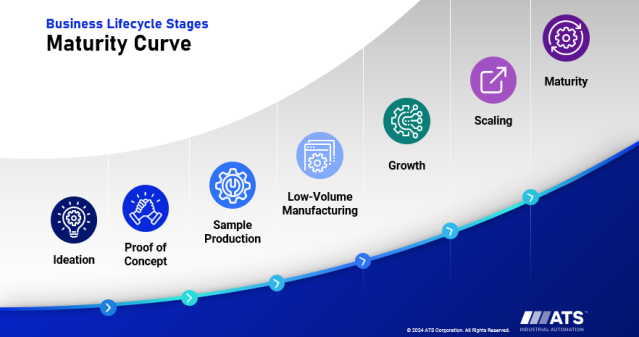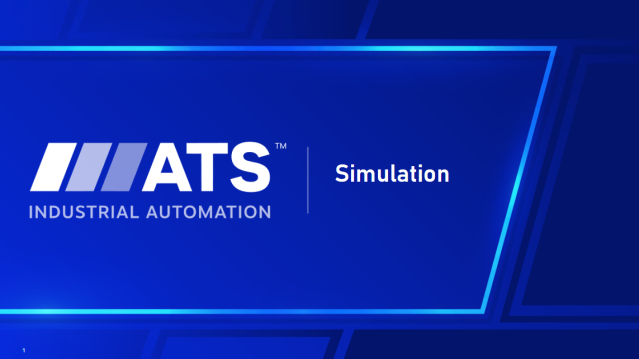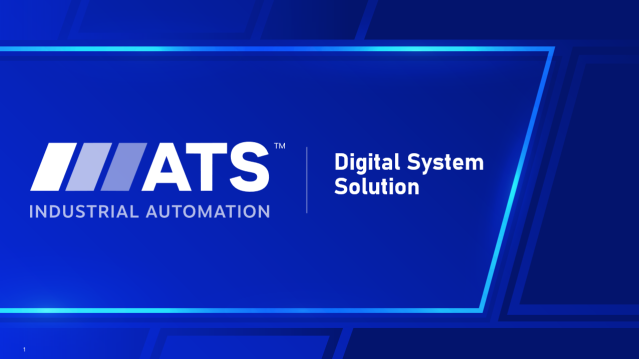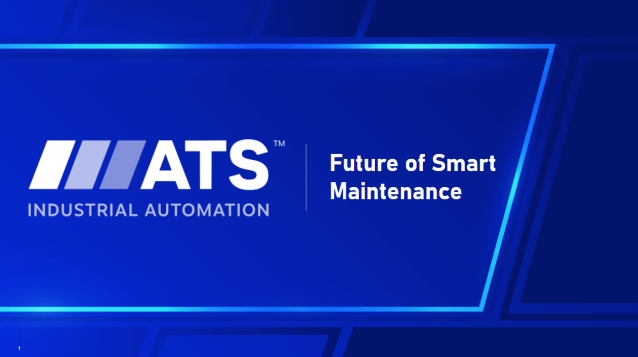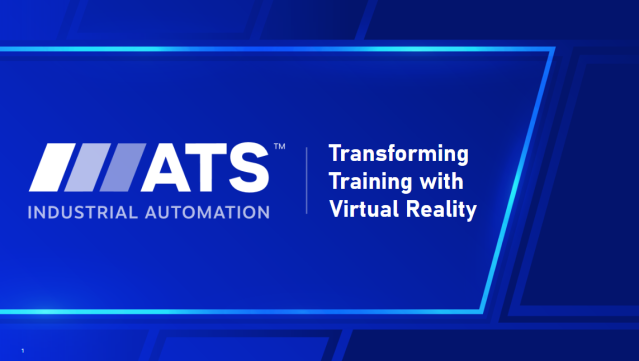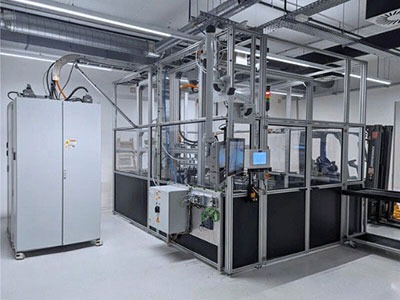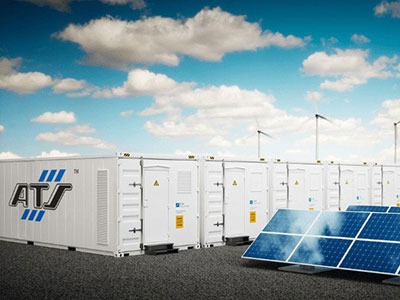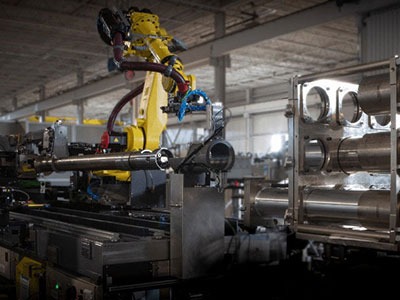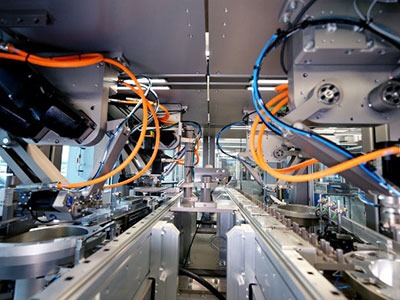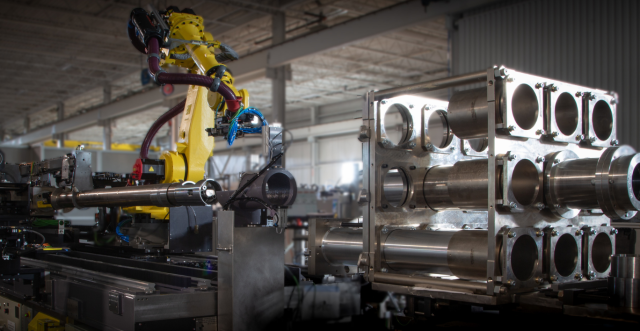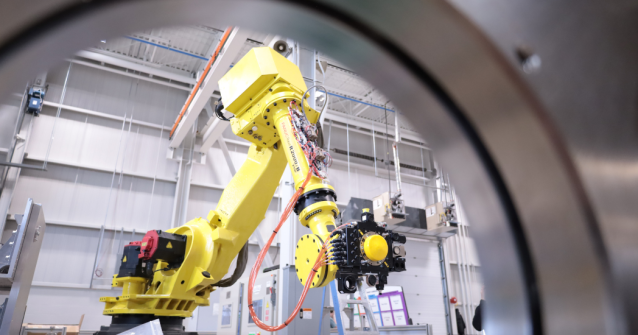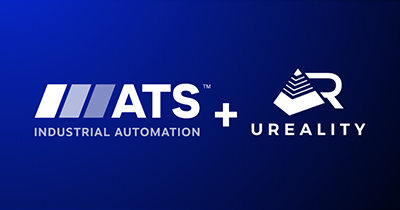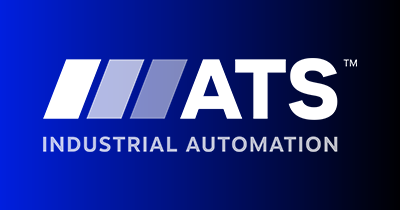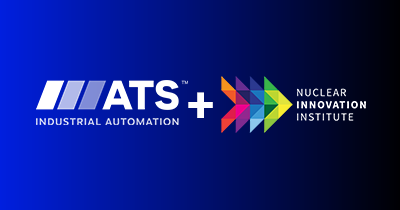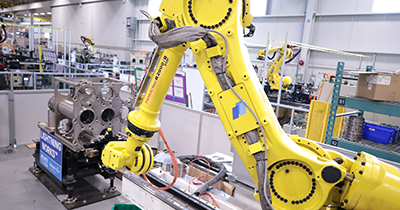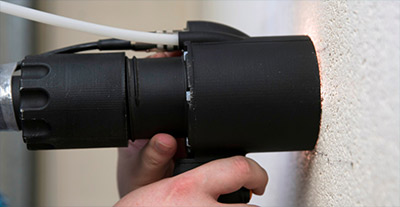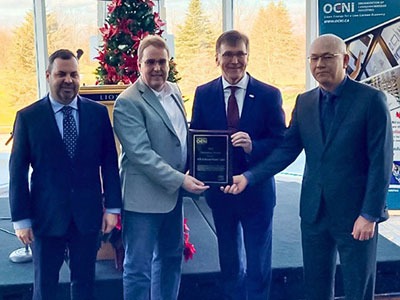2. November 2021
Manuelle Arbeiten bei Stilllegungs- und Modernisierungsprojekten sind aufgrund der hohen Expositionsraten und der gefährdeten Sicherheit nicht ideal. In diesem Bereich ist Innovation durch Automatisierung erforderlich. Automatisierung ist nicht nur möglich, sondern reduziert auch die Ausfallzeiten drastisch.
In dieser Aufzeichnung von der ATS Virtual Expo 2021 erklären Matt Wong und David Morikawa wie:
- Nukleare Modernisierungsarbeiten auf manuellen Prozessen basieren, die nun erfolgreich automatisiert wurden.
- Nukleare Automatisierung signifikant Zeit und Kosten einspart.
- Mit den gleichen Vorteilen die Automatisierung bei der Stilllegung von Kernkraftwerken erfolgreich umgesetzt werden kann.
Schauen Sie sich jetzt das Webinar „Automatisierung der Stilllegung von Kernkraftwerken“ an
HINWEIS: Das Video ist auf Englisch
Referenten
Referent
Matthew Wong
Director Project Management – Nuclear, ATS Industrial Automation.
Referent
Dave Morikawa
Chief Engineer – Nuclear, ATS Industrial Automation.
Transkript
Matthew Wong
Hello, and thank you for joining for a short discussion on the advantages of automation in nuclear. David Morikawa is our chief nuclear engineer, and I am Matthew Wong, director of project management for our nuclear business, working primarily in the design, testing, delivery, and execution of tooling and equipment for the nuclear industry.
As with any industry, and now more than ever, our nuclear industry is under pressure to continuously improve. While there are many internal and external drivers, three of the most relevant currently are:
1. Cost and schedule overruns impact the bottom line. Time is money and a shorter schedule means money saved. Automation can provide predictability to schedule and cost.
2. Reducing worker dose and following As Low As Reasonably Achievable – ALARA. Advanced Automated tooling technology can protect workers from unnecessary dose uptake.
3. Finding skilled labor to complete important outages and projects. North America is experiencing a skilled trade labor shortage. In Ontario, with two simultaneous large nuclear refurbishment projects, available resources are strained. Automation helps to solve such problems.
ATS Industrial Automation is an automation company of nuclear experts. Servicing many industries from automotive, to consumer goods, to Life Sciences, ATS brings to nuclear the latest technology from other industries.
Contrary to belief, automation is not new to nuclear, and has been present in the Canadian nuclear industry for over 15 years.
Between 2006 to the present, ATS has delivered remote and automated tools to CANDU reactor refurbishment projects and supported their site execution around the world. The use of automated tools in nuclear is both proven and effective. Our strength is providing custom automated solutions to meet our customer’s needs. We have experience executing operations and maintenance projects focused on reducing outage schedule. This includes equipment delivery of non-destructive examination equipment to highly irradiated areas of the plant.
Small Modular Reactors (SMRs)
With the emergence of the small modular reactor (SMR), ATS has been involved in the automation of plant systems, including but not limited to fuel fabrication, fuel handling, and other primary systems. ATS has a long history of supporting the refurbishment of CANDU reactors globally. Armed with this experience and expertise, we are uniquely positioned to support the decommissioning of reactors. We are currently in the process of delivering a set of tools to segment the reactor internals of a pressurized water reactor.
Medical Isotope Production
Finally, with our sister company Comecer, we support customers in the development of medical isotope production. Within all these areas, we are prepared to provide full lifecycle management from concept all the way to equipment decommissioning. To ATS every day matters.
Sometimes the importance of driving innovation and efficiency through automation is lost by the time the product reaches the consumer. However, a simple example, such as the one shown, is a quick reminder that by helping our customers, we can deliver more than just value to a business. Bruce Power provides electricity to one in three homes, hospitals, schools, and businesses in Ontario. Arguably, more importantly, they keep medical equipment sterilized and assist in fighting disease by producing and distributing medical isotopes worldwide. With that, I will hand it over to David Morikawa to provide some additional details on our capabilities and offerings.
Dave Morikawa
Thanks, Matt.
Nuclear Automation in Action: Examples
I will give in the next slides some examples of automation, and where that has been applied in nuclear, because it can be a bit of a different animal. So, this slide shows a full-scale mock-up in the ATS Cambridge facility; the mock-up is important for several reasons. First, it allows integrated testing of the equipment. But secondly, it allows things outside of the tool, outside of the equipment that you might not normally think about.
The mock-up allows you to rehearse and prove out things like the ingress and egress of the equipment, and the assembly of the equipment in place. Many of the nuclear applications where you would like to apply automation require things to be brought in modules and assembled in non-optimal locations, or in locations where there was no thought of applying automation when the plant was built. This makes very important the ability to rehearse and prove out the assembly of much of these large-scale pieces of equipment.
To support the automation in nuclear often requires large capacity structures and platforms. What you are seeing in this short clip is equipment that is being used to re-raise a column that will become part of a four-post, large-scale, heavy-capacity platform that is integrated into part of the automation. The automation first requires a custom piece of equipment to assemble, so one key element is having the ability to build the infrastructure to support the automation.
In nuclear, it often requires the ability to not just automate, but to design, large-scale, heavy-capacity structures that are integrated into the automation. This slide also shows the integration facility, but the focus of this slide is not on the assembly, ingress, egress of the equipment, but on showing the system integration and automation. You can see here the equipment operating, that there are several pieces of equipment required. Shown is the large platform, positioning tables, various equipment for cutting, removal and material handling; all these systems must first be tested and then integrated to run as a fully automated system. It is very important to take this approach and do system level integration, to automate the entire system with several discreet components, and run it completely remotely. In nuclear you see many repetitive operations, or high-dose operations. So, the ability to automate these really has a crucial impact to the customer, in terms of efficiency and dose savings.
“Automation gives you the maximum effect, saving in dose and cost.”
David Morikawa,
Chief Engineer – Nuclear, ATS Industrial Automation
This next slide shows the automation of a system that was entirely manual. The last slide showed the automation of some series, some operations, that lend themselves to automation, and the tools already with servos and more, suited to automation. But it is also important to be able to automate manual operations, and this is an example of a series of operations that to-date were highly manual, basically operators operating hand tools at the face, such as bore gauges and swabs. These operations can be more difficult to automate and require different approaches to automate, but when they are automated there is a very big benefit for the customer in dose and in operations repeatability and efficiency. That all ends up with savings and schedule. So, it is possible to automate these highly manual series, and give the customer the biggest benefit.
We must remember to have a balanced approach when we are automating series. In some cases, we retain some of the equipment that the customer has been using, and in other cases we completely change the equipment and deliver it with an industrial robot. In both cases, they are fully automated. That said, there may be some benefits or some requirements even for some of the tooling to be used from the past, to use the core of the tool that has been used before, where the tool has been qualified over a long period of time. The ability to automate those things is important and can take more effort to automate in the end, because you’re working under some constraints, but it can be quite successfully done.
This next slide shows another example of manual operations being automated or being made remote. This is an example of a haptic system, where the system operator requires a lot of tactile information; you want this operation to be done remotely, but you need that tactile feedback for the operator who is working remotely, say in a trailer or in an operating room. What you want to do is use an integrated haptic system, which allows the operator to be remote from the high dose area but gives the operator that force and torque feedback at the control room, for feeding back the forces at the face that the tool is seeing. Doing this lets the operator perform very difficult operations completely remotely, and the operator is removed from hazardous environments, so this has a big impact on dose.
This next slide shows some of the things that ATS can automate. ATS has supplied systems for segmentation, sorting and packing of rated material. These operations involve much cutting, shearing, and reducing nuclear reactor waste size, so that waste can be stored in waste containers.
ATS also provides end-to-end systems. In this automation solution, every step is fully automated, from the raw waste receiving, to reduction, material handling, and packaging, with waste exiting the system in fully packed waste containers. This automation solution gives big customer advantages including, it improves operator’s conventional safety, and takes operators out of the dose area.
Along with all those operations, there are many required material handling operations. The movement of the flasks and the usually large and heavy waste containers, and the multiple lidding and de-lidding operations, can be integrated into the system and completely automated.
Some of these systems have been designed to be entirely shielded, enabling the operator to stand immediately next to the operation while it is being performed. Much thought goes into the process flow, the equipment location, and the equipment process, whether it happens to be a type of saw cutting or some other volume reduction.
ATS provides for the very specialized area of medical isotopes. This next slide shows our sister company, Comecer. Comecer has a lot of experience, and focuses on the radiopharma side of the business, in automating the hot-cell operations that are required for isotope production.
ATS Digital Twin
This next slide talks about the ATS Digital Twin. Along with the automation of a system, there are some spin-off benefits that can be achieved with Digital Twin. Digital Twin lets you simulate the operation of the tool, allowing you to run the simulation using the PLC. This simulation has tremendous benefits.
ATS Digital Twin lets you make code changes with a lot of confidence that they are going to be correct. It also has a very large impact on training. By using these Digital Twin systems for training of automated systems, you maximize operator run-time. Thinking back to the past, a group of operators might be trained in a group of ten or twelve and get 1/10th or 1/12th of the time holding the pendant.
With ATS Digital Twin, you can train all operators simultaneously and maximize their hands-on training time. Digital Twin also saves you the time of repeatedly setting up the mock-up, because Digital Twin can do that basically instantaneously; that saves operator training time. For training, I like to introduce faults into the Digital Twin system, so that the operators can be trained on those aspects that can be very difficult to achieve in a properly designed system on the real tool. This can all be done easily in our digital environment. Back to Matt.
Matthew Wong
Thanks, David.
In summary, there are many advantages to the use of automation in nuclear. Automation brings efficiency, safety, predictable schedules, and paves the way for future innovation. Automation is not new to nuclear and has been widely adopted by other industries. Deploying automation will help to solve the challenges facing our industry today by reducing timelines, reducing worker dose, and minimizing the risk to find qualified workers to complete the important projects and outages.
At ATS, we have over 15 years of nuclear experience in providing automated tooling solutions for the nuclear industry. We were the first to automate both fuel channel removal detube and installation retube. And to date, the equipment provided by ATS has serviced over 2580 CANDU fuel channels. We are your ideal partner.
I hope you found our presentation informative and look forward to answering any of the questions that you may have. Thank you.
Jedes Projekt ist einzigartig. Wir möchten uns Ihre Herausforderungen anhören und Ihnen mitteilen, wie Sie Ihr Projekt durch Automatisierung rechtzeitig auf den Weg bringen können.



